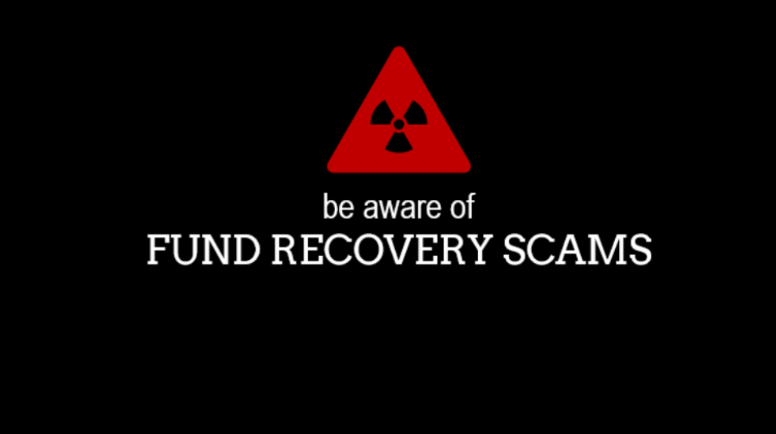Becoming a victim of an online scam can be devastating, but falling for a bogus “recovery” offer compounds the damage. I’ve spent over a decade helping people navigate the murky world of advance-fee refund and recovery scams. In this guide, I’ll break down how these schemes operate, show you the red flags to watch for, and explain how legitimate professionals reverse course to stop a second loss.
Advance-fee refund fraud preys on your hope of getting money back after an initial scam. Criminals promise to recover your lost funds—once you pay their fee—but vanish after taking your money and data. Recovering from the original fraud is hard enough; being scammed a second time is a nightmare no one should endure.
By understanding the anatomy of these scams, you’ll gain the confidence to spot fake fund retrieval pitches and access genuine assistance. Let’s dive in, step by step, so you can protect yourself and your loved ones from this double-threat scenario.
Understanding Advance-Fee Refund and Recovery Scams
Advance-fee refund scams lure you with the promise of reclaiming money or assets already stolen. The fraudster asks for an upfront payment—usually labeled as a “processing fee” or “administrative cost”—to initiate the recovery process.
Once you pay, they either disappear entirely or keep demanding more fees under new pretenses, such as legal costs or third-party delays. Victims end up out not only the original amount lost but also the so-called recovery fees.
Cybercriminals often harvest victim lists from public forums, social media posts, or underground “sucker lists.” If you posted about your losses, you become a target for these predatory asset recovery pitches.
Key Characteristics of Advance-Fee Refund Scams
- Upfront Payment Request Scammers demand an initial fee before any service begins, often between $50 and $500, paid in non-traceable methods like gift cards or cryptocurrency.
- Pressure Tactics They create urgency by claiming limited time windows or legal deadlines to process refunds, pushing you to act before verifying their legitimacy.
- Vague or False Credentials Fraudsters will cite fictitious government agencies, fake law firms, or sham “asset recovery companies” with no verifiable track record.
- Excessive Secrecy They instruct victims to not discuss the matter with anyone else or claim confidentiality agreements, isolating you from second opinions.
How Recovery Scams Work: Warning Signs
Recognizing the red flags is your first line of defense. Below, I outline the typical scam flow and what to watch for:
A recovery pitch often begins with unsolicited contact—an email, text message, or social media DM—from a stranger claiming knowledge of your specific scam loss. They may impersonate a government investigator, lawyer, or “certified recovery specialist.”
Next, they ask for sensitive data: bank account details, government ID numbers, or software access to your computer under the guise of facilitating the refund. They might direct you to download remote-access software for “verification.”
Finally, they request an upfront fee. They may promise to deduct it from your recovered amount or hold it in escrow. After payment, communication suddenly halts, or they invent a new round of fees.
Common Red Flags
- Unsolicited Outreach Legitimate firms rarely cold-call random scam victims.
- Email Domains vs. Official Sites Look for generic addresses (Gmail, Yahoo) instead of branded domains.
- Requests for Remote Access Never grant screen-sharing or remote desktop privileges to unknown parties.
- Too-Good-to-Be-True Claims No legitimate service can guarantee full recovery of cryptographic transfers or international wire fraud.
Impact of Refund and Recovery Scams on Victims
Being scammed once is traumatic; a second scam erodes trust and intensifies emotional harm. Victims often experience:
- Financial Devastation Second losses deepen the financial hole—sometimes pushing people into debt.
- Identity Theft Sharing personal data with rogue recovery outfits opens the door for broader identity fraud.
- Loss of Confidence Despair sets in when every solution seems potentially fraudulent.
- Relationship Strain Secret payments and repeated deception can isolate victims from family and friends.
Recovering from these emotional and monetary harms requires professional guidance, both legal and psychological. I’ve seen clients regain footing by combining clear-headed legal strategy with legitimate recovery support.
How to Protect Yourself: Spotting Fake Fund Retrieval Offers
Education is your best defense. Before responding to any recovery pitch, research the company or individual thoroughly:
- Verify Registration Check for a physical office address, valid business license, and professional memberships.
- Search for Online Reviews Look beyond the company’s testimonials—seek independent consumer-protection sites or forums.
- Check Red-Flag Lists Regulatory agencies and watchdog groups often publish warnings for known fraud operations.
- Ask Direct Questions Inquire about success rates, credentials, and specific cases handled. Legitimate services will furnish detailed answers.
- Get Everything in Writing Contracts should spell out fees, services, timelines, and dispute resolution mechanisms.
Table 1 provides a quick comparison of warning signs between fraudulent and reputable recovery services:
Table 1: Key Differences Between Fake and Legitimate Recovery Services
| Criteria | Fraudulent Services | Legitimate Services |
| Upfront Fees | Required before any work | Typically deducted from recoveries |
| Credentials | Vague, unverifiable | Clear, documented (bar records, licenses) |
| Payment Methods | Gift cards, crypto only | Bank transfer, credit card, escrow |
| Communication | Anonymous emails, hidden numbers | Official channels, direct lines |
| Guarantees | Full recovery guaranteed | “Best efforts” with disclaimers |
How Legitimate Scam Recovery Services Stop a Second Loss
When you’re certain you need professional help, it’s crucial to choose a service that puts your interests first. Here’s how legitimate firms operate:
First, they avoid advance-fee arrangements. Instead, they work on a contingency or success-fee basis—meaning they only get paid when you do. This model aligns their incentives with yours.
Next, they conduct a thorough case evaluation. They’ll gather documentation about the original scam, bank statements, wire-transfer records, and correspondence. With this evidence, they build a recovery strategy, reaching out to financial institutions, payment processors, and law enforcement on your behalf.
They may enlist forensic accountants to trace the money or digital forensic experts to analyze crypto-ledger transactions. Their vetted network of legal professionals and regulatory contacts increases the odds of freezing assets or negotiating partial restitution.
Throughout the process, you receive ongoing updates, transparent billing statements, and access to a dedicated case manager. This contrasts sharply with the silence and secrecy of scam recovery hucksters.
If you need start-to-finish support, consider our scam recovery services, where we specialize in mitigating second-wave fraud and maximizing legitimate recovery.
Navigating Recovery: From Reporting to Restitution
Once you decide to pursue recovery:
- Report to Authorities File complaints with cybercrime divisions (e.g., National Response Centre for Cyber Crime in Pakistan or the Federal Trade Commission in the US).
- Alert Your Bank and Payment Providers Request a fraud investigation and account freezes where possible.
- Engage a Reputable Recovery Service Confirm they don’t charge upfront fees and operate on a contingency basis.
- Prepare Documentation Collect all contracts, invoices, email logs, chat transcripts, and call recordings.
- Monitor Progress Legit services will share milestones: asset freezes, legal filings, settlement negotiations.
Table 2 outlines these steps with estimated timelines:
Table 2: Recovery Process Phases and Timelines
| Phase | Actions | Typical Duration |
| Phase 1: Case Assessment | Document collection, initial evaluation | 1–2 weeks |
| Phase 2: Reporting & Investigation | Filing with authorities, bank inquiries | 2–4 weeks |
| Phase 3: Asset Tracing & Freezing | Forensic accounting, crypto-wallet analysis | 4–8 weeks |
| Phase 4: Negotiation & Legal Action | Settlement discussions or court filings | 8–12 weeks or more |
| Phase 5: Release & Distribution of Funds | Funds recovered, fees deducted, client disbursed | 2–4 weeks post-resolution |
During each phase, transparent communication prevents surprises and curbs your risk of another fraudulent pitch.
If you’re unsure how to get started—or want a step-by-step recovery playbook—our how to get money back from a scam guide can walk you through the legal and strategic basics.
Special Focus: Crypto Scam Recoveries
Cryptocurrency scams pose unique challenges: transactions are irreversible, often anonymous, and span multiple jurisdictions. Legitimate crypto scam recovery services deploy specialized blockchain analysis tools to trace stolen tokens across wallets and exchanges.
Recovery experts collaborate directly with compliance teams at major exchanges, NSA-style tracing units, and legal counsel versed in digital asset regulations. They can issue subpoenas, leverage KYC records, and negotiate partial restitution in exchange for illicit funds hand-over.
Avoid any service that guarantees instant crypto retrieval after you send seed phrases or private keys—they’re almost certainly scams.
Frequently Asked Questions
Q1: What is an advance-fee refund scam?
An advance-fee refund scam tricks victims into paying a “recovery” fee upfront to reclaim previously stolen funds or assets. Once paid, the scammer disappears or demands additional fees, leaving the victim with new losses.
Q2: How can I spot a recovery scam warning?
Warning signs include unsolicited offers, requests for remote access, generic email domains, upfront payments in non-traceable methods, and pressure to keep the process confidential.
Q3: Are fake fund retrieval services legitimate?
No. Fake fund retrieval services typically ask for an upfront fee and lack verifiable credentials. Legitimate firms work on a contingency basis, charging only when they successfully recover funds.
Q4: What should I do if I’ve fallen for a refund or recovery scam?
Immediately stop all communication, report the scam to your bank and local cybercrime authority, and gather documentation. Then consult a reputable recovery service operating on a no-win, no-fee basis.
Q5: How do legitimate scam recovery services operate?
They perform a detailed case audit, file official complaints, engage forensic experts, negotiate with financial institutions, and use legal channels. They only charge fees after successful recovery, aligning their incentives with yours.
Conclusion
Advance-fee refund and recovery scams compound the pain of initial fraud by exploiting your desperation. By understanding the red flags—unsolicited outreach, upfront fees, and vague credentials—you can steer clear of fraudulent operators. True recovery experts eschew advance fees, work on contingency, and deploy proven legal and forensic strategies to reclaim assets. Armed with the right knowledge and professional support, you’ll stop a second loss before it starts and walk the path to restitution with confidence.





